DPA is type of online advertising that businesses can use to promote their products on various digital platforms.
It shows personalized ads to potential customers based on their interests and browsing history.
They use automation and real-time data to make sure the ads are displayed to the right people.
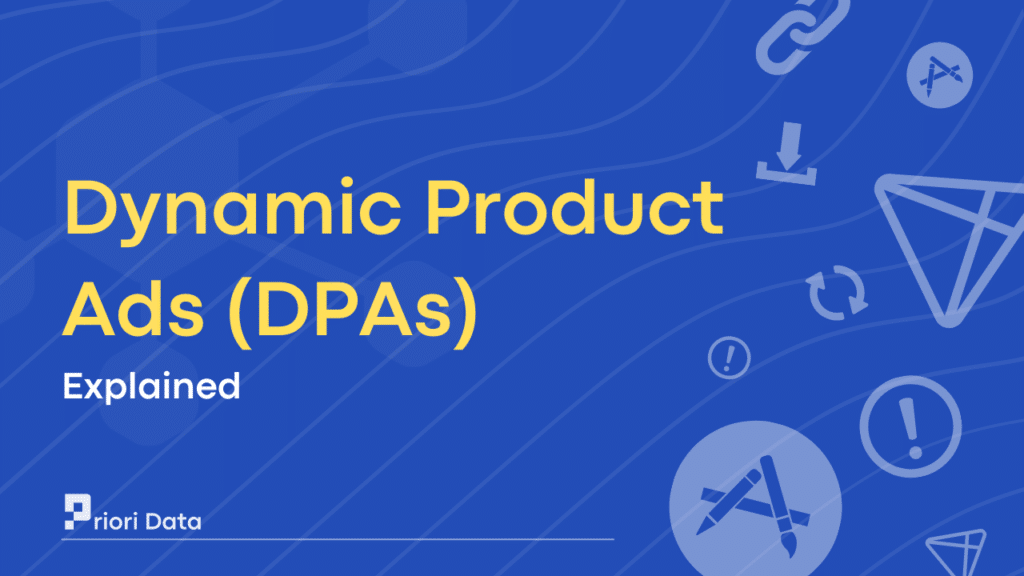
How do DPAs work?
Have you ever visited an online store and later saw an ad of the same product you were looking at on social media or Google?
That’s probably a Dynamic Product Ad! DPAs use information about the products you viewed on a website to create personalized ads just for you.
Here’s how it works.
- First, the business sets up a product catalog with all the information about its products, like pictures and prices.
- Then, when you visit their website, a cookie is placed on your browser that tracks what you’re looking at, what you add to your cart, and what you buy.
- It then creates a personalized ad with the product image, description, and price just for you!
- The ad is displayed on social media, search engines, or websites, depending on where the business set up their DPAs.
- If you click on the ad and buy the product, the business is charged for the ad, and you’re directed to the product page on their website to complete your purchase.
Overall, DPAs help businesses create personalized ads that are more likely to engage customers and lead to sales.
Benefits of using DPAs
Businesses looking to advertise their products to potential customers can benefit from using DPAs in a number of ways.
The following are a few of the main benefits of using DPAs.
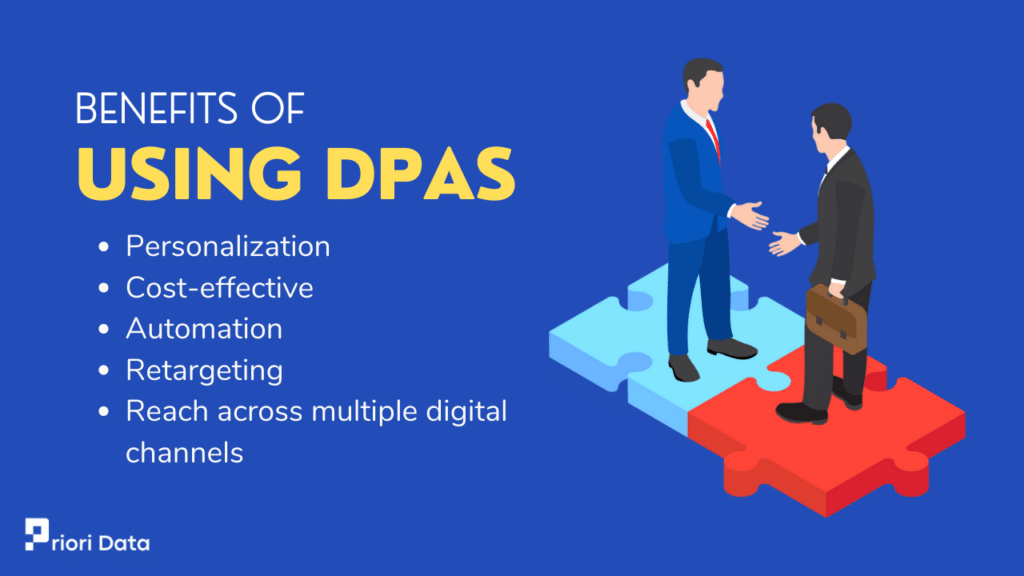
Personalization: Real-time data from DPAs is used to create personalized ads that are catered to each customer’s preferences and online activity.
Ads are more engaging and pertinent to the customer thanks to this personalized approach, which improves the likelihood that they will be converted into sales.
Cost-effective: DPAs are affordable because companies only pay for the advertisements that result in clicks or sales, which results in the more effective use of advertising budgets.
DPAs provide a better return on investment than traditional advertising, which can be costly and may not be as targeted.
Automation: Since DPAs are automated, the platform handles the remaining steps after the product catalog and tracking pixel are set up.
Businesses can concentrate on other aspects of their operations thanks to the time and resource savings provided by this automation.
Retargeting: DPAs use retargeting, which means that if a customer doesn’t finish a transaction after clicking on an advertisement, the same or related products will be displayed to them in subsequent advertisements.
As the customer is reminded of the product they were interested in, this increases the likelihood of conversion.
Reach across multiple digital channels: DPAs can be seen on social media, search engines, and websites, giving businesses the opportunity to connect with clients where they are most active online.
This multi-channel strategy makes the products more visible, which could increase engagement and sales.
Best practices for DPAs
The following are some best practices for developing dynamic product ads (DPAs) that are successful and increase engagement and sales.
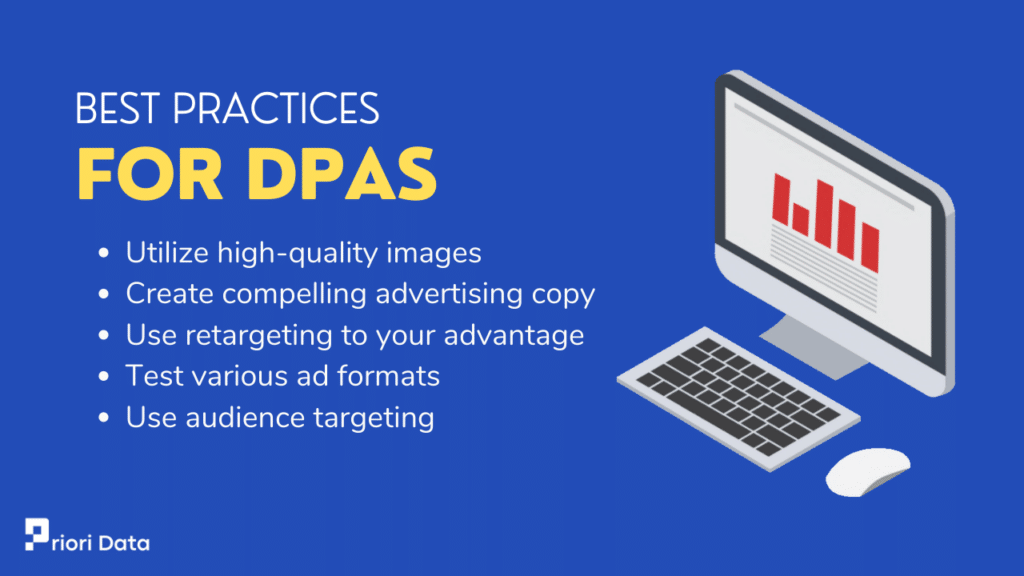
Utilize high-quality images: Using high-quality images that depict the product from various perspectives and in various environments can aid in capturing the customer’s attention and raising the chance of a click-through. A clear, well-lit image that highlights the features of the product is a must.
Create compelling advertising copy: Ad copy should be succinct, transparent, and highlight the features and advantages of the product. Use verbs that motivate the customer to act, such as “Buy now” or “Limited time offer,” in your language.
Use retargeting to your advantage: Retargeting is a potent tool that enables you to display advertisements to customers who have already expressed an interest in your products. To entice customers who have seen your products but not made a purchase, use retargeting to display the same or similar products.
Test various ad formats: Try out various ad formats, like carousel ads or single-image ads, to see which works best for your audience and products. To determine which ad copy and image combination produces the best results, test various variations.
Use audience targeting: Utilize audience targeting to connect with customers most likely to be interested in your offerings. To make sure that the right people see your ads, target by demographics, interests, and behaviors.
Measuring the success of DPAs
It’s essential to evaluate the performance of Dynamic Product Ads (DPAs) in order to assess the success of your advertising campaigns and plan for the future.
Here are some crucial indicators to monitor when gauging the effectiveness of DPAs.
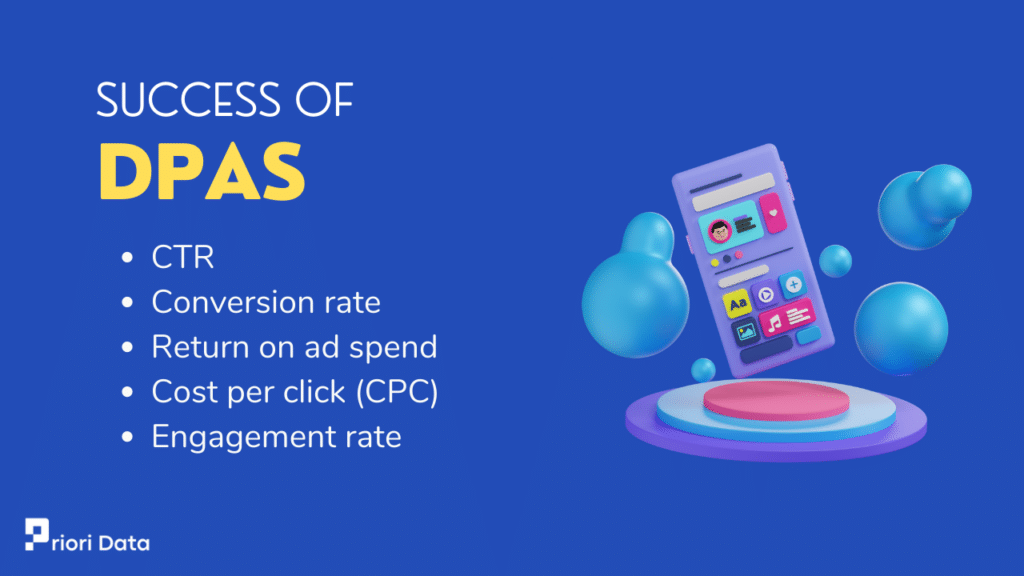
CTR: CTR counts the number of people who clicked on your advertisement after seeing it. A high CTR shows that your advertisement is engaging and pertinent to your target audience.
Conversion rate: The percentage of people who finished a desired action, like making a purchase or filling out a form, after clicking on your advertisement is known as the conversion rate. A high conversion rate shows that your landing page and advertisement are successful at generating conversions.
Return on ad spend (ROAS) is a metric that compares the revenue from your advertising campaign to the cost of running it. A high ROAS indicates a successful campaign with a profitable return on investment.
Cost per click (CPC): CPC calculates how much it costs to click on your advertisement. A low CPC shows that your ad is successfully reaching and generating clicks from your target audience.
Engagement rate: The amount of likes, comments, and shares your social media advertisement receives is measured by engagement rate. The audience is responding to your advertisement and engaging in social interactions if your engagement rate is high.
Limitations and challenges of using DPAs
Although dynamic product ads (DPAs) have many advantages for businesses, there are some restrictions and difficulties that should be taken into account.
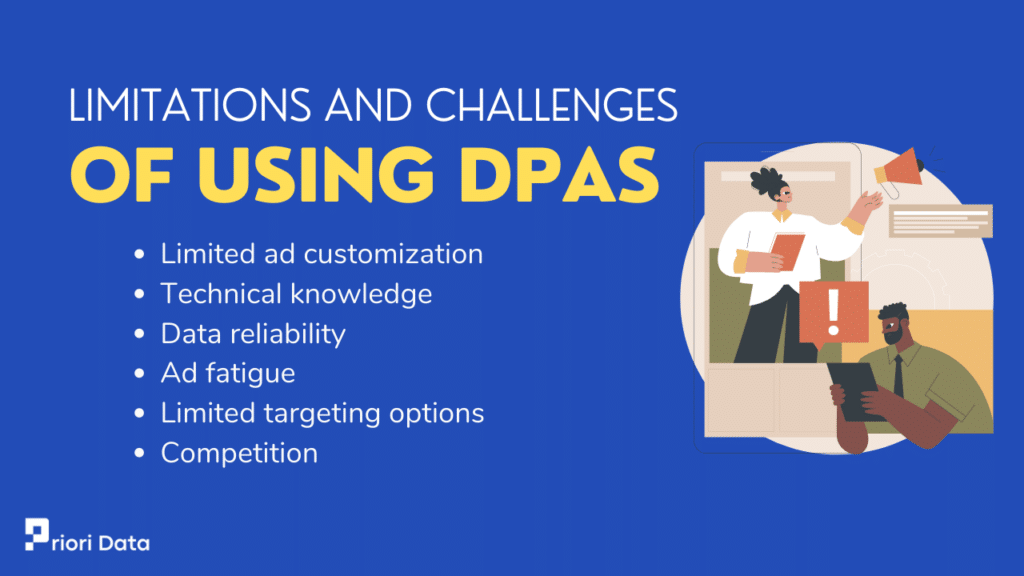
Limited ad customization: DPAs are generated automatically based on the audience targeting and product feed. As a result, there isn’t much room for ad creative customization, which may not be ideal for companies with very specific branding or design needs.
Technical knowledge: Setting up DPAs involves integrating product feeds, configuring the Facebook Business Manager, and developing dynamic templates, all of which call for technical knowledge. Businesses without technical resources might have to hire a third party provider to handle this task.
Data reliability: DPAs depend on precise and current product feed data. Incomplete, inaccurate, or out-of-date product data can cause errors in the advertisement and a bad user experience.
Ad fatigue: Since DPAs use the same ad template for numerous products, users may grow weary of constantly seeing the same ad format. Over time, this may result in lower engagement and conversion rates.
Limited targeting options: Despite the fact that DPAs provide extensive targeting options, there are still some restrictions on the types of audiences that can be targeted, especially for companies serving niche markets.
Competition: As more companies use DPAs, there is more competition for advertising space, which could raise ad prices and make it more challenging to reach the target market.
FAQs
Ques 1: What is dynamic remarketing?
Ans: Dynamic remarketing is a type of internet advertising where consumers who have previously visited a website or mobile app are offered personalized ads highlighting goods or services in which they have previously expressed interest.
Ques 2: How do I add dynamic text to my ad?
Ans: Dynamic keyword insertion (DKI), a feature that enables you to include a variable term that is substituted with a pertinent keyword from your ad group when your ad is displayed, can be used to add dynamic content to your advertisement.
Ques 3: How do Dyanic product ads work?
Ans: With the intention of persuading visitors to make a purchase, dynamic product advertising show products from an e-commerce website to people who have previously visited those products.
Based on the user’s prior engagements with the website or app, the adverts are generated dynamically.
Ques 4: Can you use dynamic Facebook ads for non-e-commerce campaigns?
Ans: Yes, you can use dynamic Facebook ads for non-ecommerce campaigns, such as lead generation or app installs.
Ques 5: How do you see dynamic product ads on Facebook?
Ans: To view dynamic product ads on Facebook, look for ads featuring products you’ve viewed or added to your cart on an e-commerce site or app.






